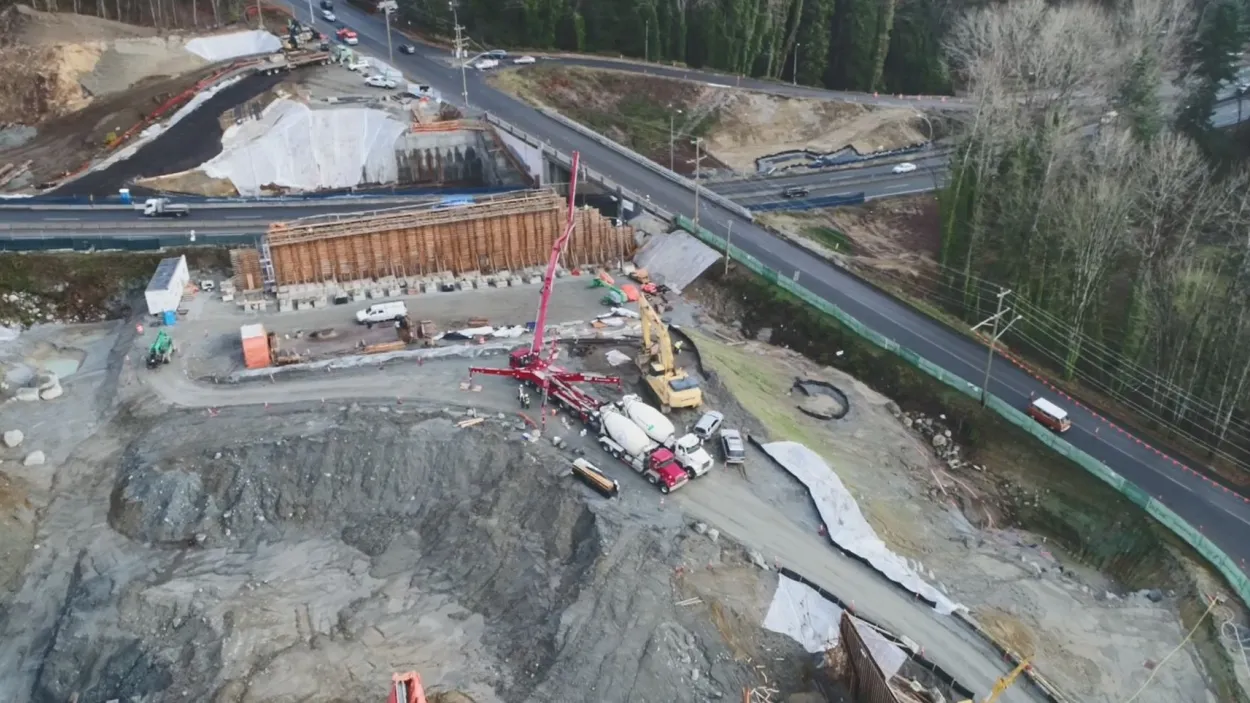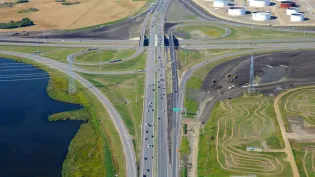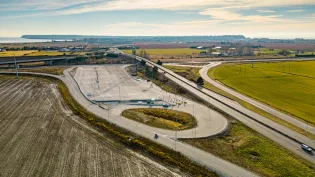Boosting Safety and Connectivity Through the Expansion of Highway 1 - Lower Lynn Interchanges
Are you looking for similar expertise for your project?
Lafarge Canada was the prime contractor on the Mountain Highway Interchange project, a highly complex 4-direction interchange project that improved traffic throughout the community. Of the $198M total project value, Lafarge was responsible for construction valued at $60 M.
The scope of work included:
- Construction of on/off ramps in all four quadrants
- Signalization at both ends of the new structure to provide the safe movement of traffic on and off Mountain Highway
- Replacement of the existing two-lane Mountain Highway underpass with a new four-lane structure
- Full intersection at Keith Road/Brooksbank Ave/Mountain Highway
- New realigned Mountain Highway
The design will include overall improvements and expansion of facilities for alternate modes of transportation.
THE CHALLENGE

Most projects of this scale have a few noteworthy elements critical to the overall success. Aside from the usual challenges involving quality assurance and strategic traffic management in a high-traffic volume urban area, the following are some of the aspects the Lafarge team needed to consider:
The construction area was close to the highly sensitive Lynn Creek, a salmon spawning ground. Therefore, all construction activity at Mountain Highway required conscious planning and consideration of environmental needs to align with the demands of a congested existing roadway.
The region around the Mountain Highway Interchange has a vibrant history. The Tsleil-watuth people called the area Kwa-hul-cha, and the archaeological record indicates their presence for thousands of years.
THE SOLUTION
Innovation in design and construction was vital to delivering this project quickly with the lowest possible lifecycle cost. Lafarge has an unparalleled, sophisticated multi-modal logistics network within the Lower Mainland. This includes an extensive quarry, ready mix, asphalt, depot, and dock network complemented by an owned marine fleet that moves over eight million tonnes of material annually.
By leveraging this network, the team successfully minimized the amount of truck traffic delivering materials to the job site from distant material sources. Furthermore, there were a few additional factors that were an essential part of the solution:
The team leveraged local understanding of potential delays due to weather or traffic and skillset allocation to optimize scheduling. Their decision to drive processes in person eliminated delays caused by remote decision-making, allowing the team to adhere to project timelines.
Throughout the Mountain Highway Interchanges project, the Lafarge professionals also applied an understanding of site-specific constraints, controlling the associated construction costs.
The project planning considered how diverse elements interacted with each other - from the outset of forecasting, risk acknowledgment, and mitigation to commissioning and handover. Any deviation from planned processes could have impacted scheduling, cost, and the aquatic species in the region; hence, the team adhered to the strictest quality assurance processes to ensure success.
The Environmental Protection Plan also included components for erosion control, air emission minimization, and noise mitigation.
With meaningful relationships with over 60 First Nations agreements across Canada, the project was led by an empathetic and responsible corporate approach to the archeologically sensitive area. The team adhered to an Initial Archeological Survey and subsequent Chance Find protocol.
THE RESULT
Lafarge's 108 years of experience building infrastructure in the Lower Mainland helped ensure the team delivered on its promise of excellence. The project was finalized in 2019, per the schedule, and successfully expanded along Canada's TransCanada Highway, improving access to BC Ferries, Squamish, and Whistler.
The team also ensured maximum environmental and archaeological protection, helping the area maintain its rich heritage.















